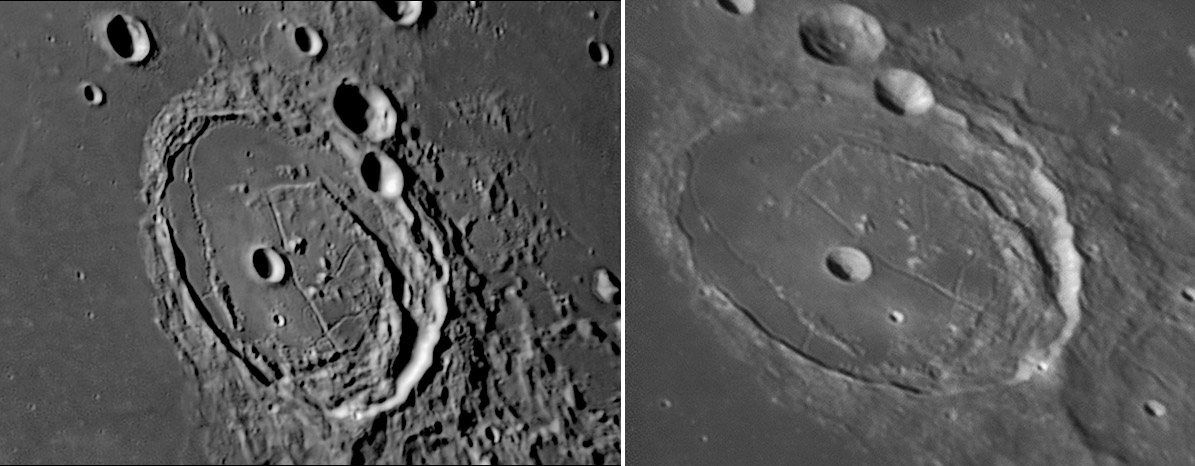
images by Paulo Casquinha (left), Portugal, and George Tarsoudis (right), Alexandroupolis, Greece
It’s a truism that images taken at different times show more than either one alone. This pair nicely illustrates that point. Paulo’s moderate to low Sun view graphically depicts the topography of the odd tilted plateau within Posidonius, and the shadows trace both the straight rilles that cut the plateau and the younger ultra-sinuous one that hugs the north inner rim before cutting more into the lava plain that flooded the lower part of the floor. George’s high Sun view lets us probe the interiors of the smaller craters here. Both Posidonius A (11 km diameter) near the middle of the big crater’s floor, and B (14 km) on its northeastern rim are seen to be simple craters with steep rims and small flat floors. The interior of the larger J, just beyond B, is more complex, with a few bulges on its inner rim and a couple of peaks on its floor. J is 22 km wide and is an example of a transitional morphology with some elements of a simple crater and some of a complex one. An Apollo 15 image shows that the walls have slumped, making the bumps visible on these images. You can learn things from Posidonius at any Sun angle!
Technical Details:
Left: 14″ f/11 SCT @f/33 + Skynyx cam + IR pass filter > 685 nm.
Right: Aug 31, 2007, 23h48m25s UT. Orion Optics 250mm at f/6.3, DMK 21AF04, barlow 5X (barlow projection method - capture at f/38), filter IR pass.
Related Links:
Rükl plate 14
George’s website
Now you can support LPOD when you buy ANY book from Amazon thru LPOD
COMMENTS?
Register, and click on the Discussion tab at the top of the page.



